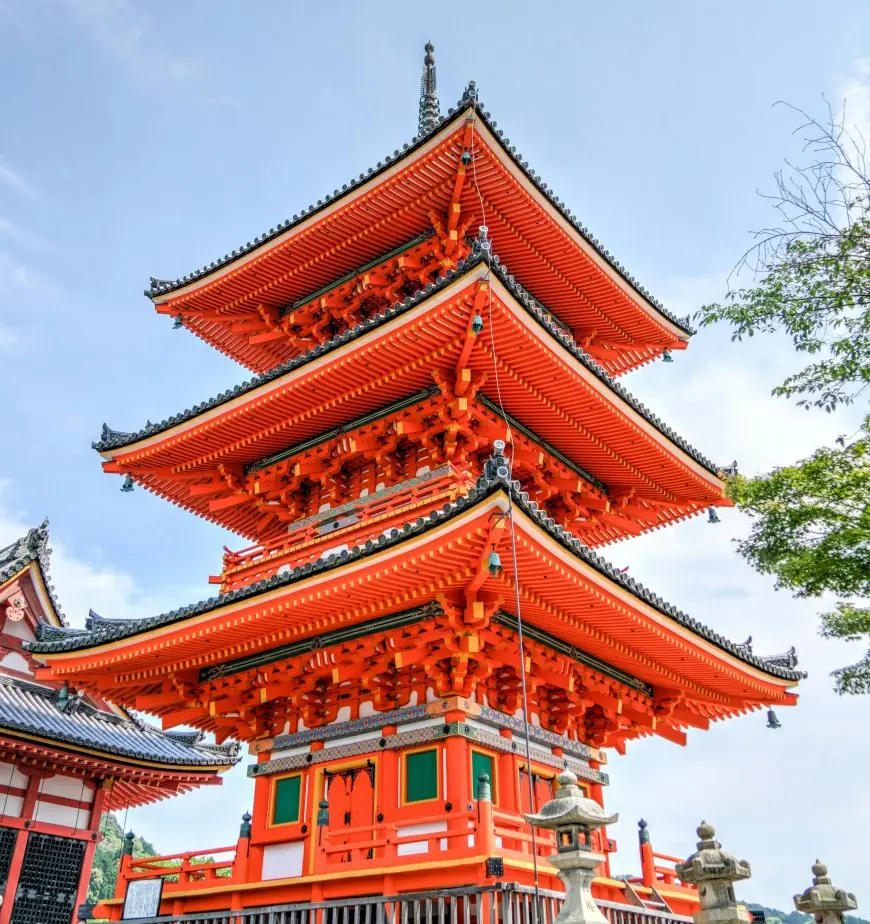Historic buildings in Japan to revive rural areas?
buildings

facing a decline due to urban migration and aging populations. However, there's a growing movement to revive these regions by leveraging historic buildings. These structures are not only architectural marvels but also repositories of Japan's cultural legacy. This article delves into how historic buildings in Japan are playing a pivotal role in rejuvenating rural areas, creating economic opportunities, and preserving cultural heritage.
Historic Buildings in Japan
Significance of Historic Buildings
Historic buildings in Japan are more than just remnants of the past; they are living testimonies to the country's rich cultural and architectural heritage. These structures offer insights into traditional Japanese life, craftsmanship, and societal values, making them invaluable for both locals and tourists.
Types of Historic Buildings
Japan boasts a variety of historic buildings, including ancient temples, traditional houses (minka), castles, and merchant quarters. Each type reflects different aspects of Japanese history and culture, from the spiritual significance of temples to the feudal power structures symbolized by castles.
Architectural Styles
The architectural styles of these historic buildings vary widely. From the elegant simplicity of Shinto shrines to the intricate wooden craftsmanship of Edo-period merchant houses, these styles showcase Japan's diverse aesthetic and functional approaches to architecture.
Cultural Heritage and Preservation
Importance of Preservation
Preserving historic buildings is crucial for maintaining Japan's cultural heritage. These structures serve as educational resources, connecting people to their past and providing a sense of continuity and identity.
Government Policies and Support
The Japanese government has implemented various policies to support the preservation of historic buildings. These include designating important structures as cultural properties, providing grants for restoration, and promoting heritage tourism.
Community Involvement
Local communities play a vital role in preservation efforts. Grassroots movements, volunteer programs, and public awareness campaigns are essential for mobilizing resources and fostering a sense of ownership among residents.
Revitalizing Rural Areas
Challenges in Rural Japan
Rural Japan faces numerous challenges, including population decline, economic stagnation, and infrastructure degradation. Reviving historic buildings can help address these issues by attracting visitors and investment.
Benefits of Reviving Rural Areas
Revitalizing rural areas through historic buildings brings multiple benefits. It promotes tourism, creates jobs, stimulates local economies, and helps preserve cultural heritage for future generations.
Case Studies of Successful Revitalization
Several rural areas in Japan have successfully leveraged historic buildings for revitalization. Examples include the transformation of Shirakawa-go village into a UNESCO World Heritage site and the restoration of Kurashiki's Bikan Historical Quarter.
Economic Impact
Tourism Boost
Historic buildings attract tourists, generating revenue for local economies. Heritage tourism offers a unique experience that combines cultural enrichment with economic benefits.
Job Creation
The restoration and maintenance of historic buildings create jobs in construction, tourism, and hospitality. This, in turn, helps retain the local workforce and supports small businesses.
Local Business Growth
Increased tourist footfall leads to the growth of local businesses, such as restaurants, souvenir shops, and accommodation services, contributing to the overall economic vitality of rural areas.
Sustainable Development
Eco-Friendly Renovations
Sustainable practices in renovating historic buildings are essential to minimize environmental impact. Using local materials, energy-efficient technologies, and traditional construction methods ensures eco-friendly restorations.
Balancing Modern Needs and Historical Integrity
Maintaining the historical integrity of buildings while adapting them to modern needs is a delicate balance. Successful projects respect the original architecture while incorporating necessary modern amenities.
Long-term Sustainability
Long-term sustainability involves ongoing maintenance, community engagement, and continuous adaptation to changing circumstances. Ensuring the economic viability of historic buildings is key to their preservation.
Social and Cultural Benefits
Strengthening Community Identity
Historic buildings serve as focal points for community identity, fostering pride and a sense of belonging among residents. They are often venues for cultural events and social gatherings.
Enhancing Cultural Understanding
These buildings provide opportunities for cultural exchange and education, helping visitors and locals alike gain a deeper understanding of Japan's rich heritage.
Educational Opportunities
Historic buildings are valuable educational resources. Schools and universities can use them for field trips, research, and hands-on learning experiences in history, architecture, and cultural studies.
Architectural Restoration Techniques
Traditional Methods
Restoring historic buildings often involves traditional methods such as timber framing, plastering, and tile roofing. These techniques preserve the authenticity of the structures.
Modern Innovations
Modern innovations, including advanced materials and technologies, can enhance the durability and functionality of restored buildings. These innovations must be carefully integrated to maintain historical authenticity.
Balancing Tradition and Technology
Balancing traditional restoration methods with modern innovations is crucial. This approach ensures the buildings' longevity while preserving their historical and cultural significance.
Case Studies of Restored Buildings
Matsumoto Castle
Matsumoto Castle, also known as the "Crow Castle," is one of Japan's most beautiful and well-preserved castles. Its restoration has made it a major tourist attraction, contributing significantly to the local economy.
Shirakawa-go Village
Shirakawa-go is famous for its Gassho-zukuri farmhouses, some of which are over 250 years old. The village's successful preservation and UNESCO designation have revitalized the area, attracting tourists from around the world.
Kurashiki Bikan Historical Quarter
Kurashiki's Bikan Historical Quarter features well-preserved Edo-period buildings along picturesque canals. The area's restoration has boosted tourism and local businesses, making it a model for other rural revitalization projects.
Role of Local Governments
Funding and Grants
Local governments provide essential funding and grants for the restoration and maintenance of historic buildings. These financial resources are crucial for large-scale preservation projects.
Policy Implementation
Effective policy implementation ensures that preservation efforts are systematic and consistent. Local governments play a key role in enforcing regulations and standards.
Public-Private Partnerships
Collaborations between the public and private sectors can enhance preservation efforts. Public-private partnerships leverage resources, expertise, and community support to achieve successful outcomes.
Role of Private Sector
Investment Opportunities
The private sector has significant investment opportunities in the restoration and adaptive reuse of historic buildings. These investments can generate substantial returns while preserving cultural heritage.
Corporate Social Responsibility
Corporate social responsibility (CSR) initiatives often include supporting cultural heritage projects. Companies can contribute to preservation efforts through funding, expertise, and volunteer programs.
Successful Private Initiatives
There are numerous examples of successful private initiatives in historic building restoration. These projects demonstrate the potential for profitable ventures that also benefit the community.
Community Involvement
Grassroots Movements
Grassroots movements are essential for rallying community support and resources for preservation projects. These movements often drive local initiatives and ensure community participation.
Volunteer Programs
Volunteer programs engage residents in preservation efforts, fostering a sense of ownership and pride. Volunteers can assist with maintenance, tours, and educational programs.
Public Awareness Campaigns
Raising public awareness about the importance of preserving historic buildings is crucial. Campaigns can educate people about cultural heritage and the benefits of preservation, garnering broader support.
Challenges and Solutions
Financial Constraints
Preservation projects often face financial constraints. Innovative funding solutions, such as crowdfunding, donations, and grants, can help overcome these challenges.
Regulatory Hurdles
Regulatory hurdles can impede preservation efforts. Streamlining approval processes and providing clear guidelines can facilitate smoother project implementation.
Innovative Solutions
Innovative solutions, such as adaptive reuse and sustainable practices, can address the challenges of preserving historic buildings while meeting modern needs.
Future Prospects
Long-term Vision
A long-term vision for preserving historic buildings includes continuous investment, community engagement, and sustainable practices. This vision ensures that these cultural assets are preserved for future generations.
Potential Projects
Identifying potential projects and prioritizing them based on historical significance and community needs is crucial. This approach ensures efficient use of resources and maximum impact.
Continuous Improvement Strategies
Continuous improvement strategies involve regular assessments, updates, and adaptations to preservation practices. These strategies ensure the ongoing relevance and sustainability of historic buildings.
Reviving rural areas in Japan through the preservation of historic buildings offers a multifaceted approach to addressing economic, social, and cultural challenges. These efforts not only safeguard Japan's rich heritage but also provide sustainable development opportunities, strengthen community identity, and enhance cultural understanding. By continuing to invest in and support these initiatives, Japan can ensure the long-term vitality and prosperity of its rural regions.







